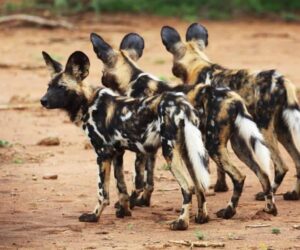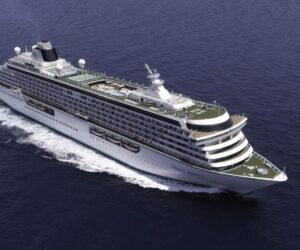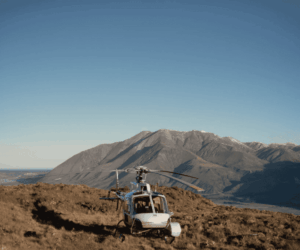Everything You Need to Know About Running in Minnesota
Andrew.Parks
Mon, 09/30/2024 – 10:18
Whether you’re an experienced marathoner or lacing up your running shoes for the first time, Minnesota has everything you need for an incredible running experience.
What To Read Next
Holiday Shopping in Minnesota’s Historic Downtowns
Read More
Minneapolis-St. Paul’s Best Mountain Bike Trails
Read More
Great Minnesota Vacations for Grandparents, Parents & Kids
Read More
Get help from the experts to plan your trip
Want to know the best spots in Minnesota? How about tips on how to make the most of your time in a specific city? Our Minnesota experts can answer your questions, offer advice, or plan the perfect Minnesota trip for you. For free.
Wellness
Things to Do
Sports
Article
Sarah Hauer
The Land of 10,000 Lakes also happens to have thousands of miles of picturesque trails through woods, along lakeshores, up and down hills, and across prairies. It’s no wonder why Olympians like marathoner Dakotah Lindwurm and middle distance runner Carrie Tollefson have chosen to live and train here.
“Minnesota is probably one of the best places in the country to be a runner,” says Shane Bauer, executive director of Grandma’s Marathon, the race Lindwurm won in 2021 and 2022. “If you want to be a strong, hearty runner, then come to Minnesota.”

A runner stretches alongside the Stone Arch Bridge
/ Credit: TC Running Company
“Minnesotans cherish and prioritize being outside and being active,” adds Kurt Decker, general manager of TC Running Company. “We don’t let things like winter [or] really hot summer days get in our way. There’s always people out running.”
The running community in Minnesota exemplifies the pride residents take in their active lifestyle with world-class races and a supportive community. Here is how you can be a part of it.

Historic Fort Snelling
WHERE TO RUN IN MINNESOTA
The state’s natural landscape provides a beautiful backdrop for runners. You may want to keep a pair of running shoes in the car; you never know what kind of trail you might stumble upon.
Fort Snelling State Park has 18 miles of paved and gravel trails at the confluence of the Minnesota and Mississippi Rivers on the edge of Minneapolis and St. Paul. Start at the historic fort and make a loop around Pike Island for just under 4 miles.

A runner along the Grand Rounds Scenic Byway
The Grand Rounds Scenic Byway System in Minneapolis has more than 50 miles of trails for runners along the city’s lakes and the Mississippi River. Run around three of the city’s most popular lakes – Lake of the Isles, Bde Maka Ska, and Lake Harriet – for about a 10-mile loop
The Heart of the Lakes Trail is a paved path between Perham and Pelican Rapids in Otter Tail County. The 32-mile trail has views of the many lakes in the area, woods, and prairies.

Superior Fall Trail Races
/ Credit: Scott Rokis for Rocksteady Running
Sakatah Singing Hills State Trail provides 39-miles of paved trail for runners from Mankaoto to Faribault. The trail passes through woods, open fields, river crossings and several lakes.
The 310-mile Superior Hiking Trail runs from just south of Duluth up to the northeastern corner of the state. Hartley Park in Duluth has more than 10 miles of multi-use trails with a section of the Superior Hiking Trail that passes through it.

Afton Trail Run 2024
/ Credit: Cary Johnson
MINNESOTA MARATHONS
The Afton Trail Run features 25 kilometer and 50 kilometer distances on a scenic, but challenging, trail in Afton State Park. The hilly course has many long climbs from the St. Croix River valley and stretches of flat terrain.
The Bemidji Blue Ox Marathon runs around Lake Bemidji passing by lush forests and the iconic Paul Bunyan and Babe the Blue Ox statues. Throughout the October weekend, Bemidji hosts marathon, 26 kilometer Lake Loop, half marathon, 10K and 5K runs.
The Ely Marathon on the edge of the Boundary Waters is held in September each year. The race from Camp du Nord to Ely makes its way through heavy woods and lakeside roads. For an extra challenge, racers can also portage a canoe across the full marathon or half-marathon distance. There’s full marathon, half marathon, and 5K options for racers.

Grandma’s Marathon runners cross Knife River
Grandma’s Marathon, first run in 1977, is the oldest marathon in Minnesota. The course along Lake Superior from Two Harbors to Duluth is a favorite among runners for fast times. Full marathon, half marathon and 5K races are held each year in June.
The Mankato Marathon runs through the wetlands in the Indian Lake Conservation Area. Throughout the weekend, Mankato hosts the full marathon, half marathon, 10K, 5K and relay races. The race is held in October.

The finish line at the Twin Cities Marathon
/ Credit: Twin Cities in Motion
Superior Trail Races across the Sawtooth Mountain Range on the Superior Hiking Trail are hilly, rugged and challenging trail runs. The races take place twice a year in September and May. The fall running includes 100 mile, 50 mile and marathon distance races and the spring edition has 50K, 25K and 12.5K races. All end at Caribou Highlands Lodge on Lutsen Mountain.
Twin Cities Marathon Weekend is a full celebration of running with full marathon, half marathon, 10 mile, 10K and 5K distances. Held in October, the courses stretch from Minneapolis to St. Paul winding around the city’s lakes and across the Mississippi river.

Saint City Running
RUNNING STORES
Running stores are more than just brick-and-mortar spots to pick up sweat-wicking clothes or a new spring-loaded pair of shoes. They also serve as community hubs by hosting run groups, races and other events.
Here are some locally-owned running stores across the state:
- Duluth Running Company, Duluth
- Endurunce Shop, St. Cloud and Brainerd
- Mill City Running, Minneapolis
- River Valley Running, Mankato
- Saint City Running, St. Paul
- TC Running Company, Eden Prairie, Maple Grove, St. Paul, Burnsville, and Woodbury
- TerraLoco, Rochester

Credit: Twin Cities Track Club
RUNNING CLUBS
While running is often considered a solitary activity, joining a running club can make a world of difference in performance and enjoyment of the sport.
“Run clubs are vital to the running community,” says Kasey Kuker, president of Rochester Running Club. “They provide guidance, knowledge of the trials, resources to reach your goals, and friendly faces.”
Kuker recommends reaching out to running clubs in your area through social media to find one that will fit your training. Most run clubs consist of runners of all ages and paces. Many running stores host regular runs too.
Here are some other runner-led groups across the state:

Credit: TC Running Company
HOW TO RUN DURING WINTER
The classic Minnesotan saying “there’s no bad weather, just bad clothing” keeps runners moving even as the temperatures drop. Running through the winter helps runner’s maintain their fitness and enjoy time outdoors.
“The biggest mistake is overdressing because you’re so cold at the start of your run,” said Cint Agar, CEO of Duluth Running Co.

Credit: Mankato Marathon
Finding the right combination of layers for running in the winter is a skill to master. Wearing light layers allows you to adjust while on the run. The guiding rule is to dress for your run as if it was about 20 degrees warmer and you were going for a walk.
Beyond the right clothing, Agar recommends having a headlamp or waist light to light dark morning and evening runs and spikes for your shoes for better footing on snow and ice.
Runners can also find indoor locations that are open in the winter, including domes with field turf and indoor tracks.

ALS SuperHero Dash
/ Credit: Richard Kruse, courtesy of Run Minnesota
ADDITIONAL RESOURCES
Road Runners Club of America is a national association of runners that offers resources to help find a run club, start a run club and educational running tips.
Run Minnesota is a non-profit that helps runners train, organizes races, hosts events and advocates for running in Minnesota.
Running Minnesota Training Log costs $15 and offers a place to document your training, a calendar of races across Minnesota and other running resources.
Motion Experts – This blog from Twin Cities in Motion features local experts who share information to help runners achieve their goals like developing a strength training plan and practicing mental skills.
The Motion Center in St. Paul, home of Twin Cities in Motion, hosts education and social programs for runners.

Medtronic Twin Cities Marathon
/ Credit: Courtesy of Twin Cities in Motion








